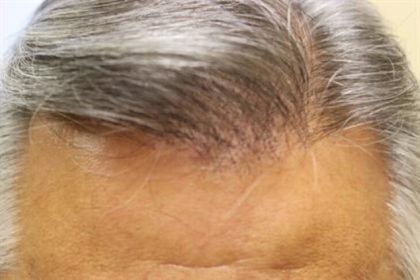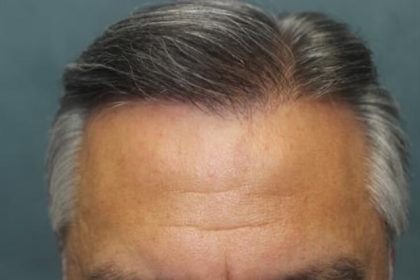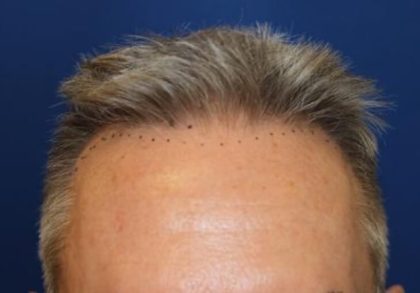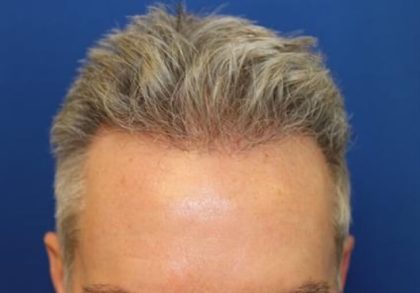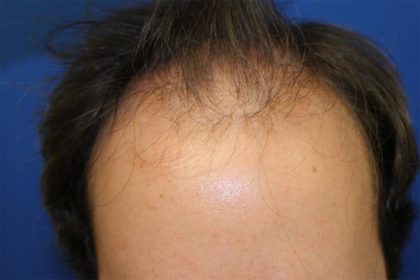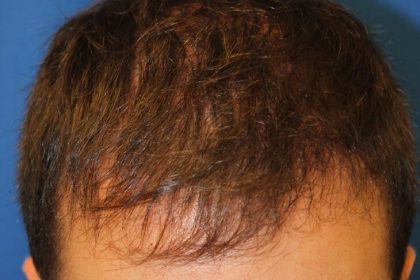Hair Loss Treatment
Consultations offered at our four convenient locations in La Jolla, San Diego, Newport Beach and Beverly Hills
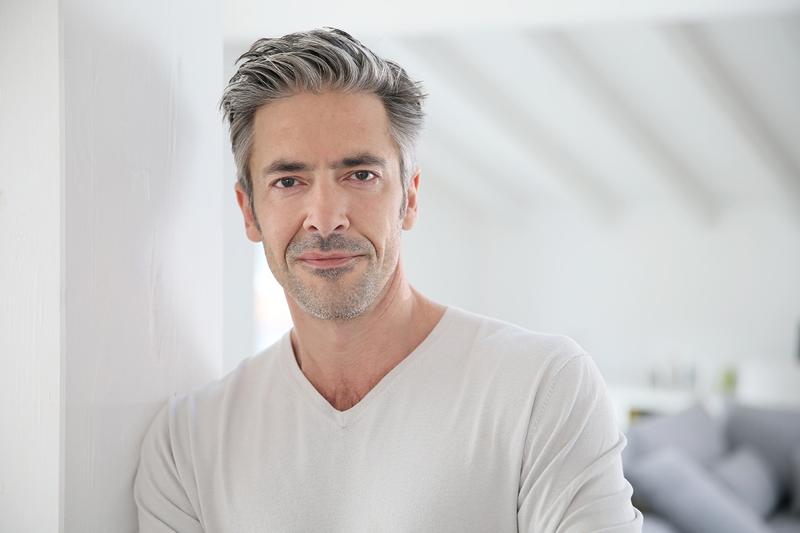
Hair loss is an issue that affects most men and women at some point in life. Hair loss can arise from a specific issue, illness, or side effect, or it can just be a product of natural hair loss or aging. For example, stress, weight loss, illness, or medications, hormonal changes and more can lead to acute telogen effluvium. This condition occurs when there is a sudden disruption to the hair growth cycle, leading to excessive shedding of hair.
If you are experiencing hair loss and are considering treatment, it is essential to consult with America’s First Triple Board Certified Hair Transplant Plastic Surgeon, Dr. Richard Chaffoo, at La Jolla Plastic Surgery & Dermatology. Located in La Jolla, San Diego, Beverly Hills, Newport Beach, and Corona Del Mar, our practice offers a comprehensive approach to hair restoration, utilizing the latest advancements in surgical and non-surgical techniques.We are the only hair restoration practice in the USA that combines the expertise and talents of both a Board Certified Cosmetic Dermatologist, Susan Stuart, MD for the medical treatment of hair loss in men and women and Richard Chaffoo, MD, America’s First Triple Board Certified Hair Transplant Plastic Surgeon for the surgical correction of hair loss using the most advanced technology available today.
To schedule a consultation with Dr. Chaffoo or Dr. Stuart, please contact us at (800) 373-4773 or reach out to us using our inquiry form.
Contents
Before and After Photos
About the Hair Cycle
The hair cycle is a remarkable process that governs the growth and loss of our precious strands. Understanding the stages of this cycle is vital in comprehending the dynamics of hair growth and how it can be affected.
- Anagen Phase: This is the active growth phase of the hair cycle, where new hair is formed from the hair follicles. It typically lasts for 2 to 7 years and determines the length of our hair.
- Catagen Phase: Also known as the transition phase, this is a short period lasting about 10 days. During this phase, the hair follicle shrinks and detaches from the blood supply, signaling the end of active growth.
- Telogen Phase: The resting phase of the hair cycle, lasting approximately 3 months. Hair follicles are dormant during this time, and old hairs are shed to make way for new ones.
What Causes Hair Loss?
In addition to normal aging, emotional and psychological stress can contribute to hair loss. Stress can trigger or exacerbate a condition called telogen effluvium, where a large number of hair follicles enter the resting phase, causing increased shedding of hair. Different kinds of stress can certainly take a toll on our mental well-being, potentially impacting our hair health as well. Stressors can cause 70% of anagen hair to move into the telogen phase, resulting in hair loss. (1)
Telogen Effluvium
One of the most common signs of telogen effluvium is increased hair shedding. Individuals may notice an excessive amount of hair falling out during washing, brushing, or even just running their fingers through their hair. This shedding may occur suddenly and without any apparent cause, leading to concerns about the health and longevity of their hair.
Thinning hair is another sign that may indicate telogen effluvium. As the hair sheds more than usual, the overall volume and density of the hair may appear diminished. This can be particularly evident along the hairline, where the hair may start to recede or appear less full. Additionally, individuals may notice a widening part, where the scalp becomes more visible due to the thinning hair.
Scalp inflammation is another telltale sign of telogen effluvium. The condition can cause irritation and redness on the scalp, which may be accompanied by itchiness or tenderness. This inflammation can contribute to further hair loss and exacerbate the overall symptoms of the condition.
If you are noticing any of the signs of telogen effluvium, it is important to seek professional advice from a qualified specialist at La Jolla Plastic Surgery & Dermatology. Dr. Chaffoo is a renowned plastic surgeon specializing in hair restoration and can provide a comprehensive evaluation and personalized treatment plan to address your specific concerns.
Male and Female Pattern Baldness
Male and female pattern baldness, also known as androgenetic alopecia, affects about 50% of men and women. (2) In men, pattern baldness typically results in a receding hairline or a loss of hair at the temples first. For women, hair loss more commonly begins at the top of the scalp. Both men and women can experience this condition at any age after puberty, although pattern baldness tends to develop in adulthood. Women are especially more affected after the onset of menopause. (2)
This condition can be frustrating and hard to treat on one’s own. Pattern baldness can make a patient appear older than they are, possibly leading to self consciousness. Often, hair restoration with FUE, using NeoGraft or ARTAS, can help these patients effectively restore their hairlines and other areas that have a thinning appearance.
Alopecia Areata
A specific type of hair loss called alopecia areata is an autoimmune condition that leads to patchy hair loss. Unlike male or female pattern baldness, this condition appears less uniformly on the scalp. About 50% of people experiencing this condition will find that their hair grows back on its own after about a year, even without treatment. However, there are treatments available to address this condition for patients who do choose to seek intervention to ensure healthy and consistent hair regrowth. This often includes topical treatments, which we can discuss in more depth during a personal consultation. (3)
Hair Restoration in Southern California
At our practice, we are proud to offer our patients the most advanced hair restoration techniques available. Follicular unit extraction (FUE) has been the preferred method for hair restoration for many patients, as it avoids the lengthy scar that was often required of previous harvesting methods. This technique has been further enhanced by different technologies and automations such as the NeoGraft device, SmartGraft, and ARTAS.
We understand that hair restoration is a very personal journey, requiring the utmost care and precision. With this in mind, we take a personalized approach to each hair loss case and choose the technique that will benefit you most.
FUE
Advanced hair transplantation techniques allow us to extract individual follicular units (1-4 hairs) with unparalleled accuracy and efficiency, ensuring natural-looking results. Through Follicular Unit Extraction (FUE), we carefully harvest healthy hair follicles from donor areas and transplant them to areas where hair is thinning or receding. As previously mentioned, this technique has minimized the total scarring caused by hair transplantation, as no horizontal scar will be required for harvesting donor hairs. The result is more natural-looking, thicker hair that allows patients to regain confidence and a more youthful appearance.
NeoGraft
NeoGraft is a handheld device designed to optimize manual hair restoration using FUE. It utilizes pneumatic pressure to extract hair follicles, minimizing trauma to the surrounding tissues. This results in reduced healing time and a more comfortable experience for the patient. The system also allows for precise control and placement of the transplanted follicles, ensuring a natural hairline and seamless integration with existing hair.
SmartGraft
SmartGraft utilizes automated FUE to harvest and transplant hair follicles. Unlike traditional hair transplant methods like follicular unit transplantation (FUT), it does not require the use of a scalpel or sutures, resulting in no linear scarring. Instead, tiny incisions are made in the donor area where individual hair follicles are extracted using a specialized tool, similar to NeoGraft. These follicles are then carefully transplanted into the areas of the scalp experiencing hair loss.
ARTAS
ARTAS employs robotic technology to enhance the FUE procedure. With its advanced mapping algorithms and artificial intelligence, ARTAS can identify and harvest the healthiest hair follicles with unparalleled precision. This ensures optimal graft survival and natural-looking results. In addition to optimal hair extraction, ARTAS can also intelligently place the hairs into their new places on the scalp, making for a more efficient procedure overall.
While this is a robotically-assisted hair restoration method, a trained professional will always be standing by and monitoring the procedure to ensure you are receiving the best results.
Personal Consultation

A personal consultation at La Jolla Plastic Surgery & Dermatology at one of our office locations near San Diego and Los Angeles is the first step in understanding the possible treatment avenues for your hair loss. Dr. Richard Chaffoo, a renowned hair restoration expert, will carefully evaluate your medical history and discuss any concerns you may have regarding your hair health. During the consultation, Dr. Chaffoo will also thoroughly examine your scalp and hair follicles–in addition to considering your medical history–to determine the extent and cause of your hair loss. This information will help Dr. Chaffoo develop a treatment plan that will ultimately provide you with the best results.
Cost of Hair Restoration in San Diego
The cost of addressing hair loss will depend on various factors, including the extent of the hair loss, the chosen treatment method, and any additional procedures that may be necessary.
We encourage you to contact La Jolla Plastic Surgery & Dermatology at (800) 373-4773 to schedule your consultation with Dr. Richard Chaffoo today. Let us guide you toward a personalized treatment plan that addresses your concerns and restores your hair to its natural glory!
References
- Hughes EC, Saleh D. Telogen Effluvium. Nih.gov. Published July 3, 2019. https://www.ncbi.nlm.nih.gov/books/NBK430848/
- Ho CH, Zito PM. Androgenetic Alopecia. Nih.gov. Published May 18, 2019. https://www.ncbi.nlm.nih.gov/books/NBK430924/
- Lepe K, Zito PM. Alopecia Areata. PubMed. Published 2021. https://www.ncbi.nlm.nih.gov/books/NBK537000/





